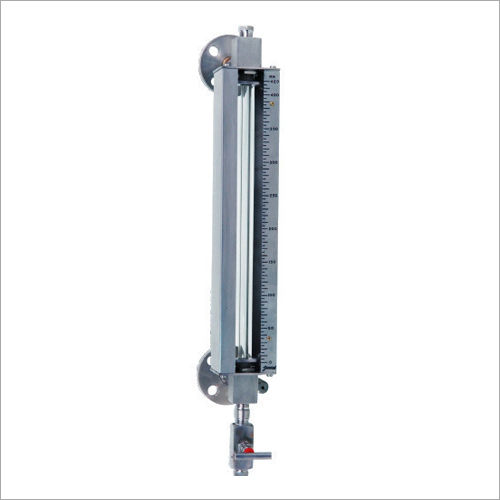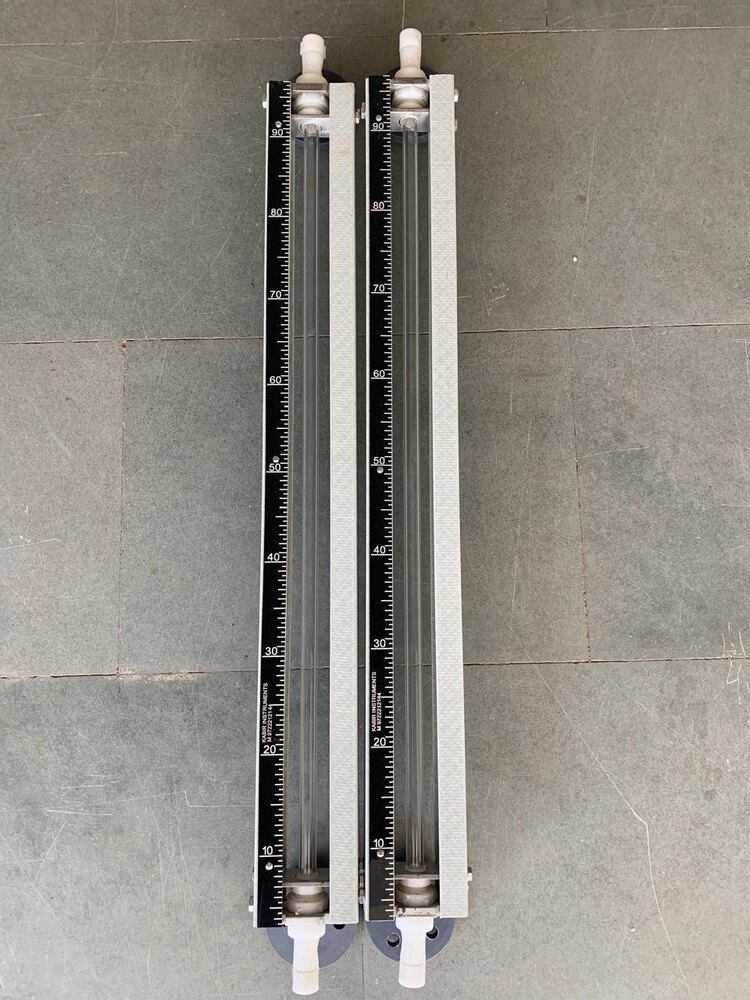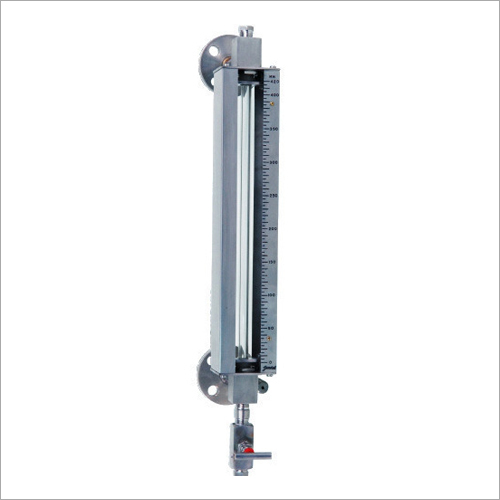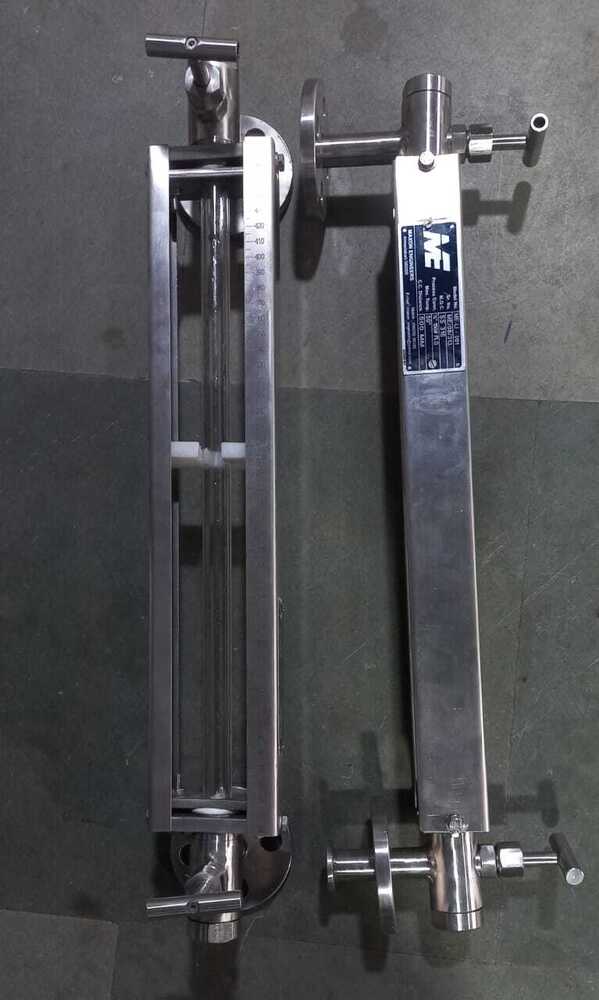



Level Gauge
Product Details:
- Height 20 Meter (m)
- Color SILVER
- Product Type Tubler Level Gauge
- Sensor Type Emitter
- Measuring Range As per coustomer request Max. 1000mm as a single piece Newton
- Usage Industrial
- Size As per coustomer request Width 15 mm to 200mm and Length 100mm to 1000mm
- Click to View more
Level Gauge Price And Quantity
- 40 Piece
- 7000.00 INR/Piece
Level Gauge Product Specifications
- Industrial
- As per coustomer request Width 15 mm to 200mm and Length 100mm to 1000mm
- PP, SS304/316, and PVDF ctd
- 0.5 %
- 304SS/304LSS grade stainless steel
- SILVER
- 20 Meter (m)
- As per coustomer request Max. 1000mm as a single piece Newton
- Emitter
- Pharmaceutical Manufacture, Chemical Processing, Petro Chemical Plants, Food And Beverages Industry, Marine Engineering, Pulp And Paper Industry, Textile Industry, Nuclear Power Engineering, Mechanical Engineering, Oil Refineries, Water Engineering
- CS, SS, PP, PVC, Duplex Stainless Steel, SDSS
- 10 Kg/cm2 (to) 15 Kg/cm2
- Tubler Level Gauge
Level Gauge Trade Information
- AHMEDABAD
- 150 Piece Per Week
- 1 Days
- Yes
- Free samples are available
- box packing
- Eastern Europe, Western Europe, Asia, Australia, North America, South America, Middle East, Africa, Central America
- All India, Manipur, Bihar, Gujarat, Sikkim, Mizoram, Karnataka, Madhya Pradesh, Andhra Pradesh, Arunachal Pradesh, Chandigarh, Central India, Meghalaya, Telangana, Daman and Diu, Goa, Jammu and Kashmir, Maharashtra, Dadra and Nagar Haveli, East India, Delhi, Kerala, West India, Tamil Nadu, Himachal Pradesh, Chhattisgarh, Lakshadweep, Pondicherry, Odisha, North India, Haryana, Rajasthan, Tripura, Punjab, Jharkhand, Andaman and Nicobar Islands, Assam, Nagaland, South India
- iso 2015-2016
Product Description
Used to measure fluid level,ïlevel gauge is ideal for multiple applications, such as water hardness measurement, pH correction and chemical concentration. This device gives accurate readings in a wide range of temperatures. Hence, this product gives accurate measurements with a high degree of repeatability. The level gauge can be easily installed on pipe. It is widely used in water and chemical industries.
Level gauges are instruments used to visually indicate the level of liquids within a tank or vessel. They are essential for various industrial applications to ensure efficient and safe process control. Here's a breakdown of their applications:
Applications Across Industries:
Level gauges are vital in numerous industries for monitoring and controlling liquid levels in different types of containers. Some key sectors include:
Chemical and Petrochemical: Monitoring levels of raw materials, intermediates, and finished products, including corrosive and hazardous liquids in reactors, storage tanks, and processing equipment.
Oil and Gas: Measuring levels in storage tanks, pipelines, separators, and processing units in refineries and upstream operations.
Water and Wastewater Treatment: Monitoring water levels in reservoirs, storage tanks, and various stages of the treatment process.
Food and Beverage: Ensuring accurate levels of liquids like milk, juice,in production and storage tanks, maintaining hygiene in the process.
Pharmaceutical: Precise monitoring of liquid levels in production processes for, vaccines, and chemicals, often requiring high accuracy and visibility.
Power Generation: Monitoring coolant and fuel levels in power plants, including boiler water levels which often require high pressure and temperature resistance.
Marine: In ballast and cargo tanks for level monitoring to ensure safe operation and stability.
Agriculture: Monitoring levels in silos and feed tanks.
Specific Applications:
Beyond broad industries, level gauges are used in specific equipment and processes:
Storage Tanks: Providing a direct and continuous indication of the amount of liquid in storage vessels of all sizes.
Pressure Vessels: Monitoring levels within closed systems under pressure, where direct viewing is not possible without a gauge.
Boilers: Crucial for monitoring water levels in steam boilers to ensure safe and efficient operation. Specialized bi-color gauges are used for high-pressure steam applications.
Feed Water Heaters and Deaerators: Monitoring water levels in power plants.
Small Industrial Tanks: Providing a simple and economical level indication.
Underground Storage Tanks: Specialized mechanical or magnetic gauges are used to monitor levels safely.
Working Principles and Types:
The application often dictates the type of level gauge used. Different types operate based on various principles:
Sight Glass/Tubular Level Gauges: The simplest type, using the principle of communicating vessels. A visible glass tube connected to the tank shows the liquid level. Suitable for low-pressure applications and direct visual indication.
Reflex Level Gauges: Utilize the difference in refractive index between liquid and vapor to show the level as black (liquid) or silver/white (vapor) through a grooved glass. Ideal for colorless liquids and high-pressure, high-temperature applications.
Transparent Level Gauges: Employ two transparent glasses to provide a clear view of the liquid, useful for observing liquid color, interface levels between two immiscible liquids, and situations with foaming. Can be used with illuminators for better visibility.
Bi-color Level Gauges: A variation of transparent gauges, specifically designed for high-pressure steam boilers. Red and green lights are used to differentiate between steam and water levels.
Magnetic Level Gauges: A float with a magnet inside a chamber moves with the liquid level and magnetically interacts with external indicators (flags or a shuttle) to show the level. Suitable for hazardous, high-temperature, and high-pressure applications, offering a non-contact indication.
Float and Board Level Gauges: A float connected to a wire rope with a counterweight moves a pointer along a graduated board to indicate the level. Used in large storage tanks and reservoirs.
Ultrasonic Level Gauges: Use ultrasonic waves to measure the distance to the liquid surface. A non-contact method suitable for various liquids and conditions.
Radar Level Gauges: Employ radio waves to measure the liquid level, similar to ultrasonic but often more accurate in challenging conditions.
Key Considerations for Selection:
Choosing the right level gauge depends on several factors:
Type of Liquid: Corrosive, viscous, hazardous, or clean liquids may require specific materials and designs.
Operating Conditions: Temperature and pressure ranges are critical for selecting a suitable gauge.
Tank Design and Mounting: Side or top mounting options need to be considered based on accessibility.
Accuracy Requirements: Different gauges offer varying levels of precision.
Visibility Needs: Some applications require clear visual indication, possibly from a distance.
Maintenance Requirements: Ease of maintenance and cleaning can be important.
Safety Regulations: Compliance with industry standards and safety requirements is essential, especially for hazardous materials.
In summary, level gauges are indispensable tools across a wide spectrum of industries, providing critical information for process control, safety, and inventory management. The specific application dictates the most suitable type of gauge based on the liquid properties, operating conditions, and required performance.

Price:
- 50
- 100
- 200
- 250
- 500
- 1000+






 Call Me Free
Call Me Free
